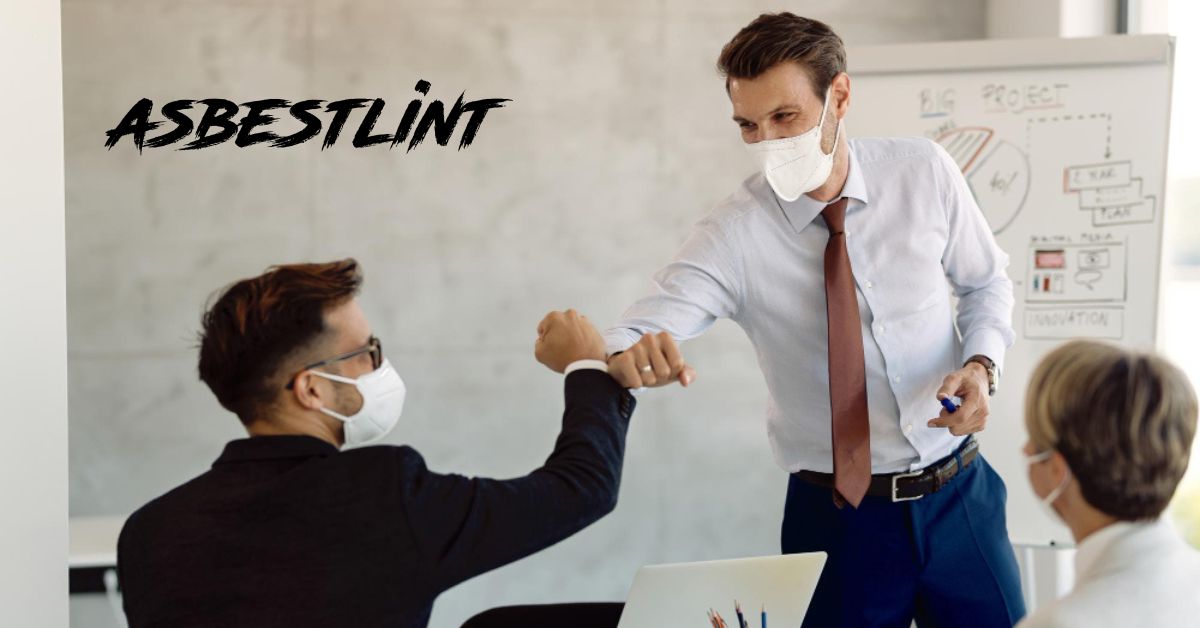Some may view asbestoslint, sometimes known as asbestos tape, as merely another building material. But many individuals don’t realize that there’s a major health risk hiding under its seemingly harmless surface. Knowledge of this dangerous drug and its effects is crucial in light of the grave dangers it poses to human health. Essential facts about asbestos, including its hazards and safe management choices, are provided in this blog article. It is essential to keep knowledgeable about construction materials in order to ensure your safety and the safety of others around you, whether you are a homeowner, a contractor, or just someone who is interested in the subject. Join me as I explore the fascinating world of asbestos!
What is Asbestlint?
Asbestlint, or asbestos tape, is a pliable substance that is mostly utilized for insulating and sealing. Asbestos fibers make it up; the material was highly sought after for its resistance to heat and long lifespan.
Asbestos is commonly utilized in older buildings to cover areas surrounding pipes, ducts, and heating systems. During the mid-century building boom, it was a popular choice due to its efficacy in minimizing heat loss.
But what most people don’t know is that it may emit tiny threads into the air if it becomes torn or disturbed. If breathed over an extended period of time, these fibers provide serious health hazards. Anyone working with construction materials from that time period must be familiar with these characteristics.
For successful risk management, it is essential to identify probable areas where asbestos may be present in your environment. Both homeowners and workers can benefit from being informed about this substance so they can take the necessary precautions to avoid being exposed.
Health Risks Associated with Asbestlint Exposure
The hazards to health from Asbestlint exposure are substantial. The asbestos fibers included in this substance pose a health risk if breathed in. When these microscopic particles enter the air, they can readily lodge in the lungs.
Severe respiratory illnesses can develop with prolonged exposure. Mesothelioma and asbestlint are diseases that might manifest years after exposure. Serious medical attention is often necessary for these potentially fatal conditions.
It may take decades after exposure to asbestos for symptoms to manifest. People may gradually develop symptoms such as shortness of breath, chest discomfort, or persistent coughing.
The health effects of asbestos exposure, no matter how short, can be long-lasting. If you suspect pollution in your surroundings, it is vital to act swiftly and treat any potential exposure seriously.
Legal Regulations and Guidelines for Managing Asbestlint
Having a firm grasp of the rules and laws governing Asbestlint is essential. The usage and disposal of asbestos products are subject to strict regulations in many nations. Safe handling methods and public health are the goals of these rules.
Businesses must ensure their workplaces are safe for workers in accordance with regulations set out by the Occupational Safety and Health Administration (OSHA). Training on how to safely recognize it and handle it is part of this.
Furthermore, there are frequently stringent regulations for the disposal of asbestos waste imposed by municipal authorities. Serious penalties, including criminal prosecution, may be imposed for noncompliance.
Before beginning any restoration project that might expose households to asbestlint, it is vital to check the local building codes. Being aware of these regulations helps keep everyone safe and out of trouble. Always keep detailed records while working with asbestos-containing products; this will serve as proof that you complied with all applicable laws and standards.
Safe Solutions for Dealing with Asbestlint
It is important to proceed with caution while dealing with Asbestlint. Limiting access to the place where the material is stored should be your first priority. This keeps fibers from spreading and reduces dust.
Any direct contact with asbestos necessitates the use of protective gear. Wearing protective gear such as a respirator, gloves, and disposable coveralls is essential for the safe handling of any material.
Encapsulation is another viable option. This technique eliminates the need to remove asbestlint by binding its fibers with a specialized sealant.
Hiring experts in asbestos abatement is a smart move if removal is in your future. For a risk-free extraction, they offer the specific tools and expertise you need.
To minimize dust discharge during small repairs or disruptions to intact asbestos, wet the material. Care must be exercised at all times while handling this potentially dangerous material.
Professional Removal Services
The best course of action when dealing with them is to hire expert movers. In order to properly handle dangerous substances, these professionals have the education and tools needed for the job.
Their exposure hazards are minimized by adhering to rigorous safety standards. Using the right containment techniques and safety equipment is essential during the removal procedure.
You may save time and avoid worry by hiring pros. You will not be responsible for understanding and complying with any complicated requirements or risks to your health.
An evaluation of your property is another service that respectable businesses typically offer. After locating the afflicted locations, they will provide safe removal options adapted to the specific needs of the asbestos.
By hiring experts, you can be certain that the task will be completed to your satisfaction, shielding you and your family from any potential dangers. It’s a proactive measure to provide a safe living space while following asbestlint management regulations.
DIY Methods for Removing Asbestlint
Doing asbestlint removal yourself is unsafe. But if you do decide to take on this challenge, you must be well-prepared.
Acquire the necessary protective gear first. To reduce exposure, you must use protective gear such as a respirator mask, gloves, and clothes.
Dampening the region is the next step in minimizing dust release during the cleanup process. For optimal results, fill a spray bottle with water and add a small amount of dish soap.
Gently peel them off surfaces being careful not to damage them. As soon as possible, seal any item that has been removed in plastic bags so it does not get contaminated.
After using any tool, make sure you wet-wipe it or dispose of it correctly. Thoroughly cleaning up ensures that no asbestos particles remain in your surroundings.
When working with asbestos materials, such as asbestoslint, it is important to keep in mind that even a small slip-up can cause serious health problems. Seek the advice of experts on safe handling procedures if you experience any uncertainty.
Conclusion
Everyone must be aware of the risks associated with Asbestlint. Serious health problems, including as mesothelioma and lung cancer, can develop from asbestos exposure. Because of these dangers, you should be on the lookout for asbestos in your surroundings.
Be well-versed in the rules and laws that govern asbestos management at all times. Your rights and obligations when handling this dangerous substance can be better understood with familiarity with these standards.
Think about hiring a professional removal agency if you think you have an asbestlint problem. Professionals have the training and tools necessary to remove asbestos in a safe manner, reducing the likelihood of injury.
Safety must always take precedence for individuals who are prone to do-it-yourself approaches. If you choose to handle little problems on your own, make sure to wear safety gear and follow all specified protocols.
Always be on the lookout for asbestos and take precautions to protect yourself and those you care about. Reducing exposure risk at your home or business is as simple as keeping yourself informed about the hazards, following legal rules, getting expert aid when needed, or doing it yourself safely.







